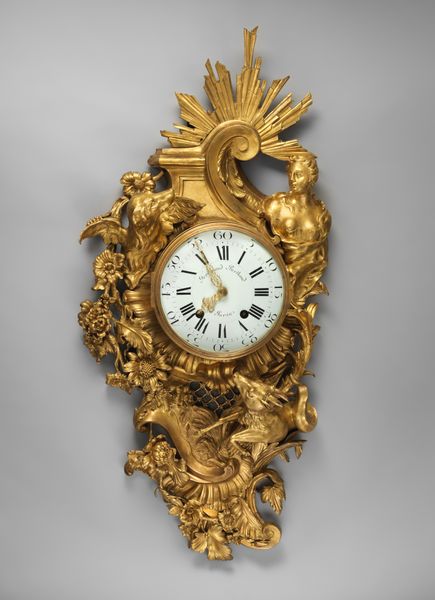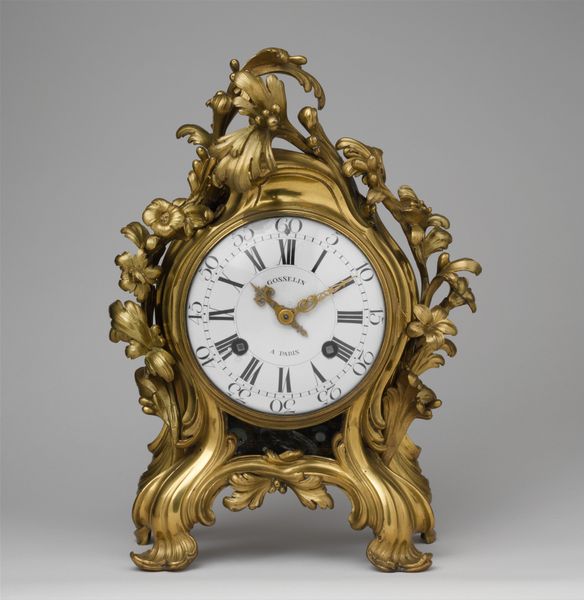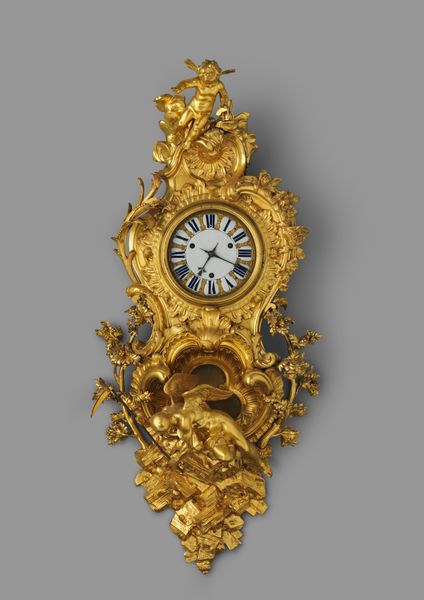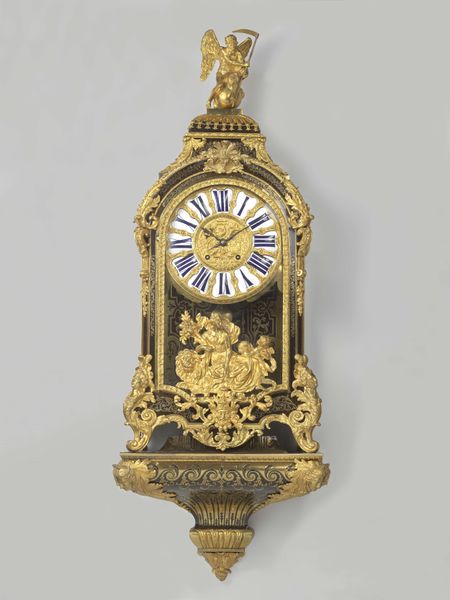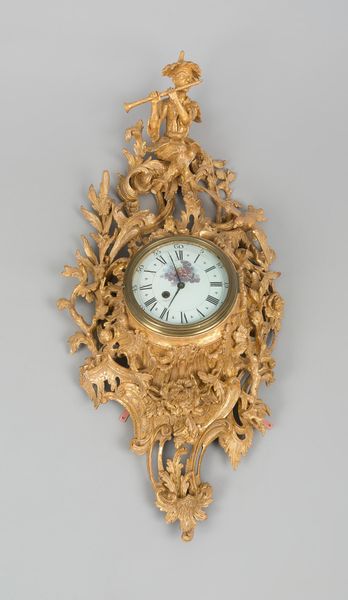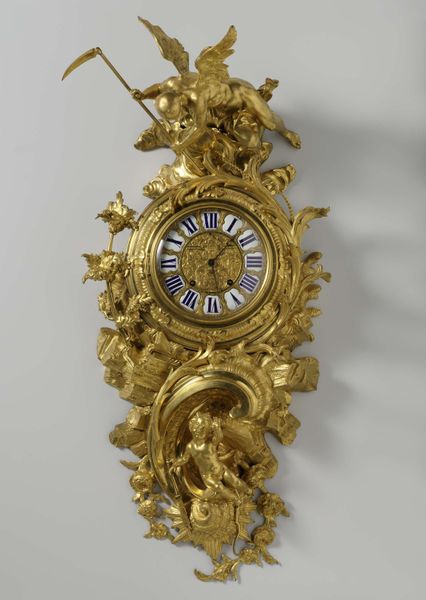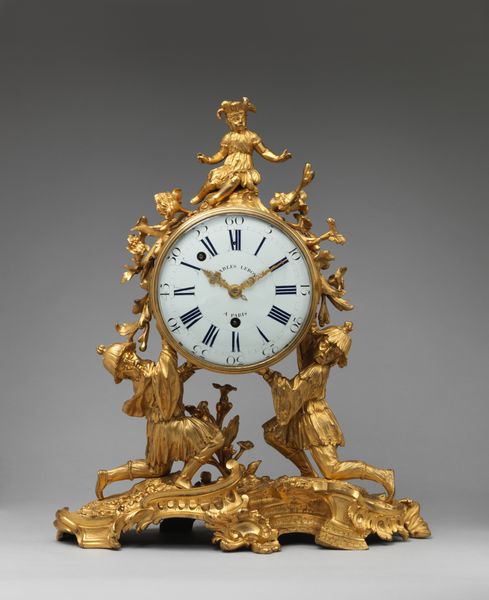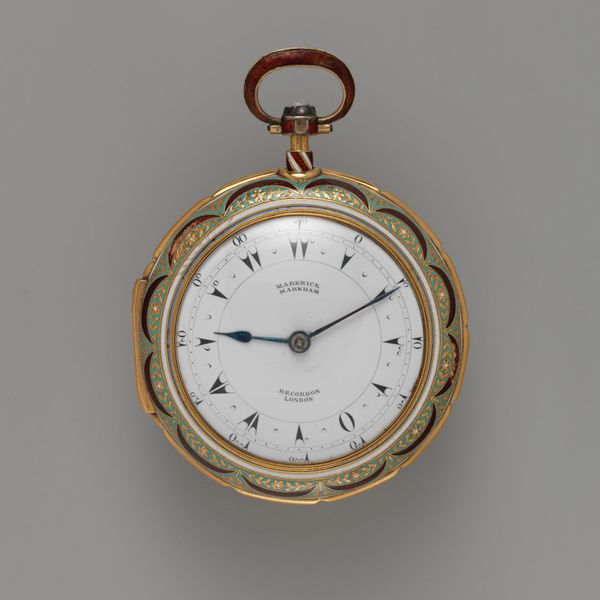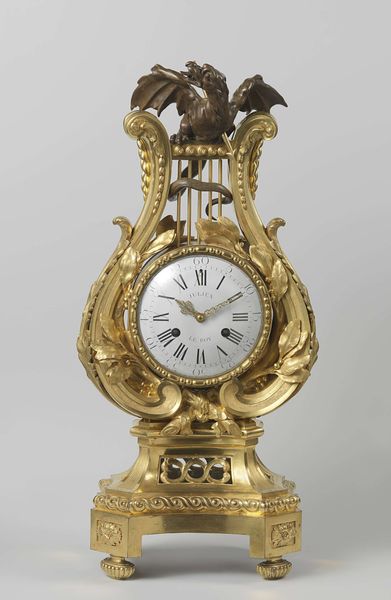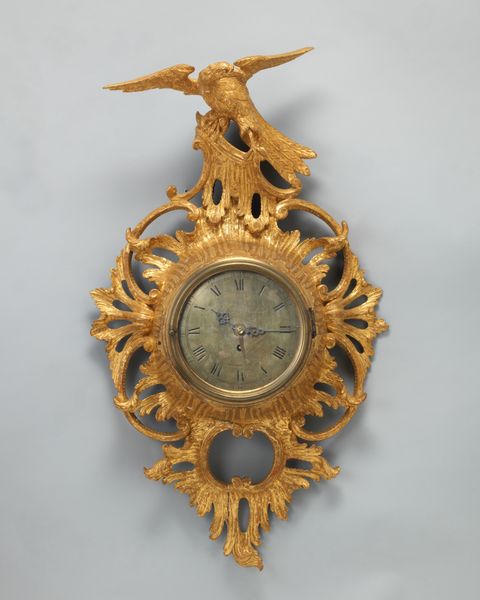
#
3d sculpting
#
3d model
#
wedding photograph
#
3d image
#
3d printed part
#
jewelry design
#
virtual 3d design
#
3d shape
#
3d digital graphic
#
metallic object render
Dimensions: height 69.0 cm, width 27.5 cm, depth 15.0 cm
Copyright: Rijks Museum: Open Domain
Curator: Let's take a closer look at this Console Clock made of gilded and chiseled bronze, crafted around 1745-1749. Jean-Joseph de Saint-Germain is credited with its creation. Editor: Oh, it’s excessively opulent! The first thing that strikes me is the intensity of the gold; it speaks of royal indulgence, and that rooster on top almost seems comical given all the detail. Curator: Well, the use of gilt bronze was indeed fashionable in the French court during the mid-18th century. The rooster on top adds an interesting note—perhaps signifying vigilance or even pride, aligning with the self-image of the ruling class. Editor: That gilding though—I wonder about the division of labor in its production. Was Saint-Germain solely responsible for the casting and chasing, or did specialized artisans contribute to the meticulous detailing and surface finishing? The density of the bronze would imply complex labor, extracting ore and the sheer force to mold into being a timepiece of this ornate standard. Curator: That's a great point to raise. Saint-Germain likely headed a workshop involving various specialists. These clock cases involved collaborative work regulated by the guild system. Think about the power and influence embodied by possessing an object of this nature. This gilded bronze console clock serves as a fascinating symbol of Rococo tastes. Editor: Yes, the rococo excesses are fascinating given all we know about social unrest simmering beneath the surface around that time in France, though it is also important to study the material means in and of themselves. Even if the clock did nothing but sit in a room, its materiality tells us just as much about its creation as its use did. The burnishing must have been extremely time-intensive. I find the textures almost sensuous! Curator: The aristocracy did so embrace sensuousness during that time! The craftsmanship absolutely reveals larger societal concerns; the politics inherent within objects. They often operated within these intricate webs of production and desire, power and prestige. Editor: Examining this clock reminds me that artworks often reveal the stories of production obscured by aesthetic appreciation, offering tangible reminders of craft history. Curator: And for me, I cannot help but be in awe of how cultural statements materialize across gilded surfaces through form and ornament!
Comments
No comments
Be the first to comment and join the conversation on the ultimate creative platform.
